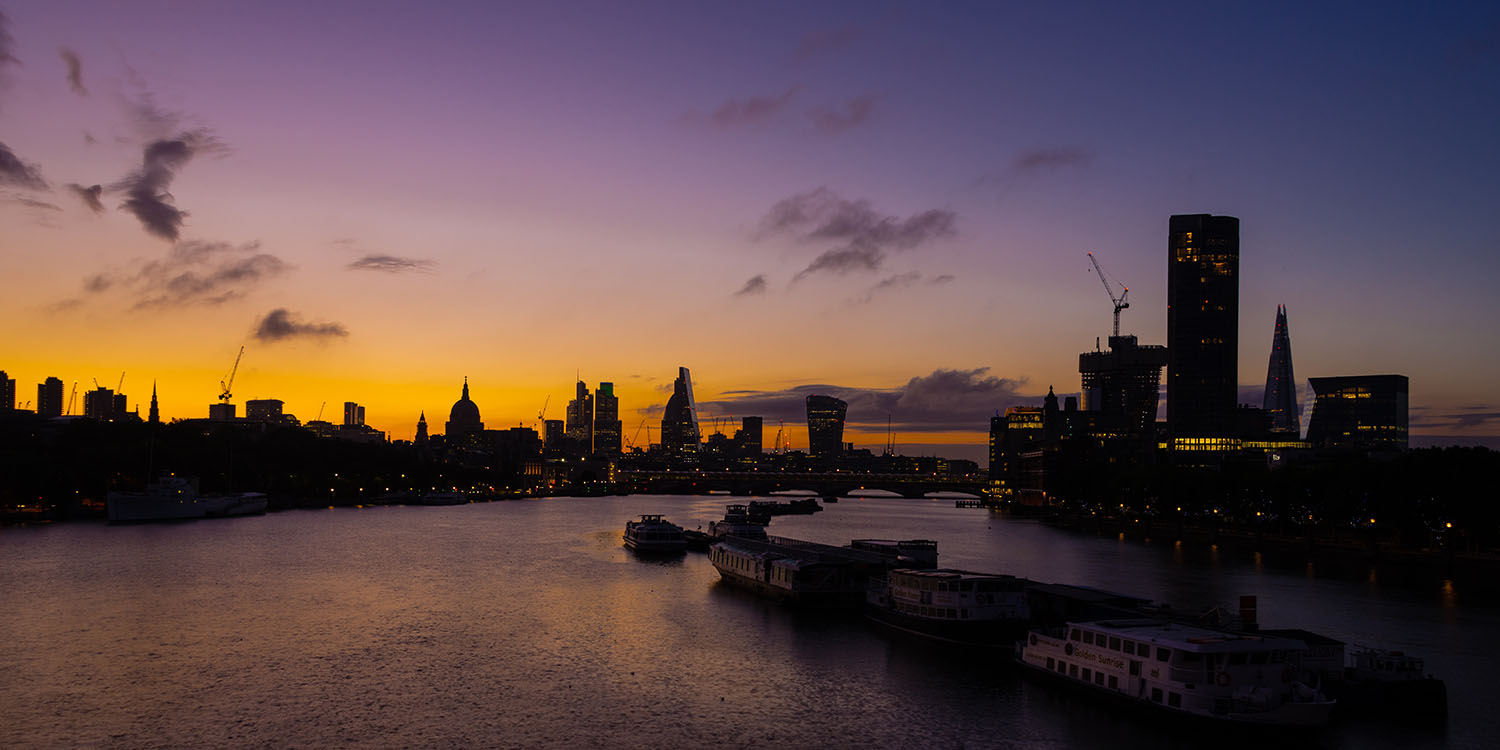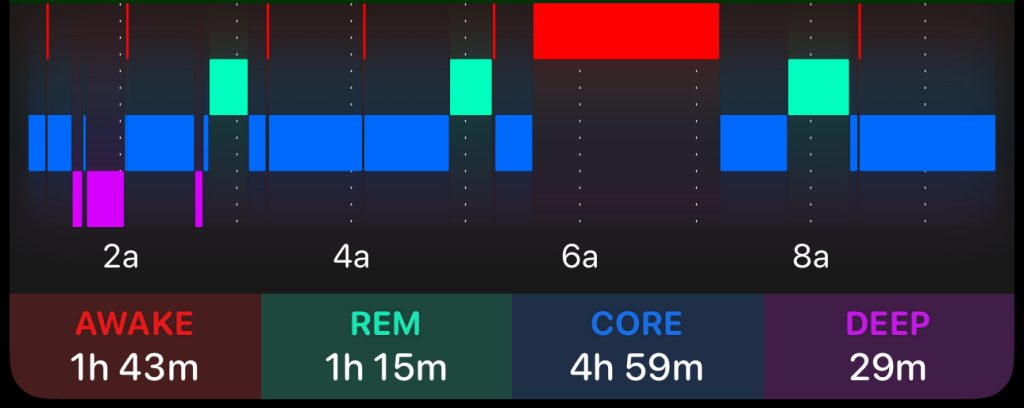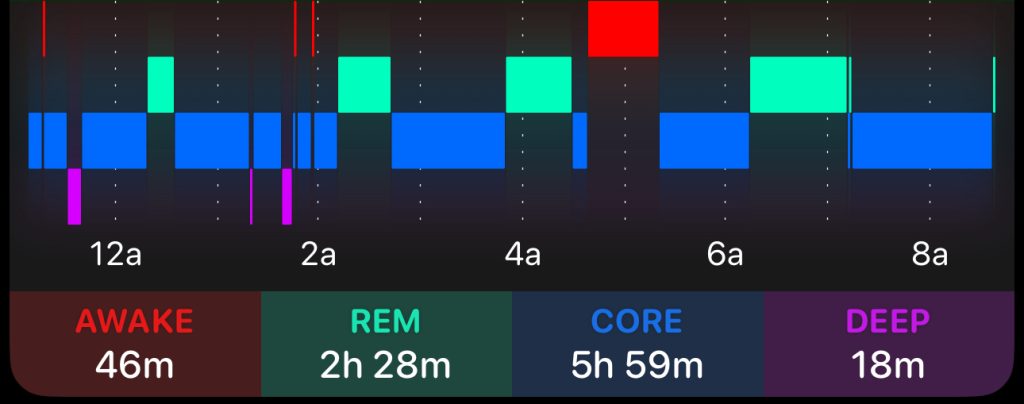
A chance decision made early next year turned out to pay dividends some 18 months later: An Apple Watch worn overnight proved incredibly helpful when dealing with a bout of insomnia.
Specifically, it helped me through a common vicious circle with insomnia: You can’t sleep, you get stressed about the fact that you’re not sleeping, which makes it harder to fall asleep …
There are different ways of classifying insomnia, with two of the labels referring to how it is experienced.
Onset insomnia is when you have trouble falling asleep in the first place. I’m grateful that I’ve never suffered from this. If I’m very tired when I go to bed, I’m asleep almost as soon as my head hits the pillow. The rest of the time I’ll read last thing, and at some point realise my eyes have closed, put down the book and again be asleep within seconds.
Maintenance insomnia is when you fall asleep just fine, but wake at some point in the night, and then find it difficult to fall asleep again. This is the type I suffered, and its cause was no great mystery. Stress is a common cause, and I was going through some significant stress at the time. (The reason for that won’t be fully resolved for a few months yet, but thankfully is much reduced now.)
But whichever type you suffer from, that vicious circle very commonly kicks in. In my case, I’d wake in the early hours, not be able to fall asleep again, and then worry that if I didn’t fall asleep again, I’d only get 2-3 hours’ sleep, and be a zombie the next day. Regular sleep deprivation is also associated with increased risk of other health issues, and again concerns about that can add to the very stress that’s stopping you sleeping in the first place.
Enter my Apple Watch
Back in February of last year, I found I could buy a Series 5 Ceramic watch for about half the original price. It was something of an experiment, but as I’d struck it lucky on pricing, I knew I wouldn’t lose money if I decided to resell it. As it was, though, I fell instantly in love with it.
That left me with a spare Series 4. Since it turned out to be worth very little, I decided on another experiment: Keeping it as an overnight watch.
Sleep-tracking was my original motivation, though it wasn’t insomnia that prompted it.
I got COVID just before Christmas, and my energy has been slow to return. For a time, pretty much all I was doing was working and sleeping, and for several weeks afterwards I was still going to bed in the early evening. Things are slowly improving, but my bedtimes – and actual sleep times – are still very variable, so it’s helpful to have actual data on how much sleep I’m getting.
But beyond that, many of us – perhaps even most – are not getting as much sleep as we ideally should, and without hard data, it’s easy to fool ourselves into thinking we are. So routine sleep-tracking is something I think has ongoing value.
That did prove useful. When I could see that I’d had two or three nights of getting less sleep than ideal, it would prompt me to be more disciplined around bedtimes to address the problem.
Addressing the vicious circle of insomnia
When maintenance insomnia hit, the pattern was that I’d fall asleep as normal, but would then wake at some point in the night, typically in the early hours. At that point, I’d feel wide awake, and struggle to fall asleep again.
When I woke in the middle of the night, my subjective sense was that I was wide awake for a long time before I finally fell asleep again. And the longer I was awake, the more stressed I’d get about the fact that I wasn’t sleeping.
I tried the 20-minute Test which is often recommended: If you haven’t fallen asleep again within 20 minutes, get out of bed and do something else for a while, until you feel tired again, then return to bed. That didn’t work for me: Once I was out of bed, I didn’t get tired again, even though I was following the advice to avoid screens.
But my Apple Watch – running Napbot – had the solution to the stress about sleeplessness causing more sleeplessness.
Each morning, I’d be presented with an overview of my sleep pattern. In some cases, it did indeed confirm that I was awake for a long time. In this example, I could see that I’d woken around 5.30am, and remained awake until sometime after 7am (on a weekend):

It also shows that I briefly woke at half a dozen other points in the night.
But there were other nights when I’d have that same subjective sense of being awake for hours, but the data showed me it was 30-40 mins, sometimes less.

It would also often reveal that my total sleep time was just fine, despite the interruption.
I was also curious about the phases of sleep, and whether or not my patterns were typical. I’d noticed, for example, that I seemed to get very little of what Napbot labels deep sleep.
But much Googling later, it turns out that the whole area is much less clear-cut than the pretty colors might suggest. While sleep-trackers like the Apple Watch are reasonably good (though far from perfect) at telling when we’re awake, and when we’re in REM sleep, they are much less reliable at distinguishing lighter from deeper sleep.
Additionally, there is some debate over how much deep sleep we need, with recommendations ranging from 25% down to 10%. Putting the two together, it seemed that my own mix of Core and Deep sleep was not uncommon, and the chances were good that I was getting enough of the latter.
Similarly, it’s far from unusual to wake in the middle of the night before falling asleep again. Indeed, there’s some historical data to suggest that two separate stages of sleep was actually very common in the days before electric lighting. And those really brief periods where I’m shown as being awake are also perfectly normal, and are usually so brief we don’t even really know we woke.
All-in-all, then, the combination of data and reading up on sleep turned out to be reassuring. My overall sleep looked to be fine, in spite of the insomnia. I was awake less than I thought I was. The patterns I was experiencing were not particularly unusual. And most insomnia is short-term in nature.
That completely removed the stress about insomnia, and while my sleep patterns are still not 100% where I’d like them to be, I do now feel confident that once the source of the stress is removed, then things will settle down.
Photo: Richard R. Schünemann/Unsplash
FTC: We use income earning auto affiliate links. More.




Comments